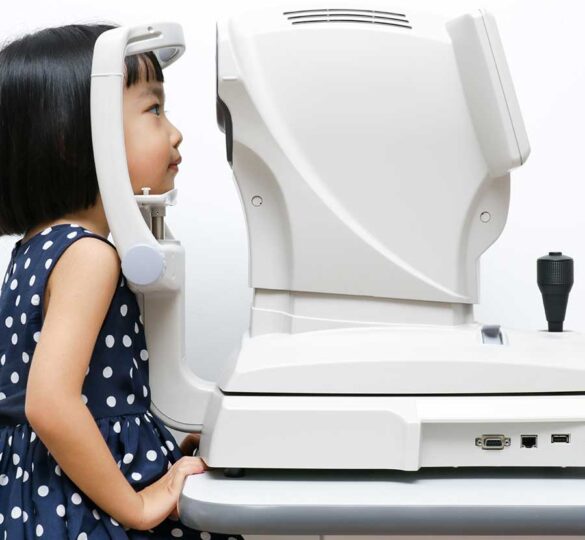What is a Visual Field Test?
If you have been diagnosed with glaucoma, chances are, you will have taken several visual field tests.

This test helps your doctor detect and monitor glaucoma. Usually, the visual field test is taken once a year but depending on the severity of your glaucoma, your doctor may decide to check your visual field more frequently.
A visual field test maps out what your world looks like to you. It measures the area of vision, or how wide of an area your eye can see. Glaucoma is often called “The Sneak Thief of Sight” because it usually is a painless process that mostly affects the peripheral, or side vision, first.
The visual field shows changes that are not noticed by the patient until the damage is severe. Other diseases, such as cataract, stroke, macular degeneration and diabetes, can also influence the visual field. Your doctor will take these possible effects on your exam when interpreting the results.
Types of Visual Field Tests
There are different types of visual field tests. The one most commonly used in the United States is the Humphrey visual field, which consists of a center fixation light and blinking test lights in your side vision.
It is important when taking this test that you concentrate on the fixation light in the center and press the button when the blinking test light is seen with your side vision. If you move your eyes to follow or look for the blinking lights, it decreases the reliability of the test and the ability of your doctor to monitor your disease.
Areas that appear gray or black on the test results reflect areas in your vision that are blurred or missing. If your glaucoma remains uncontrolled, these areas will get darker and larger.
Another type of visual field test is the Goldmann visual field. This test is done with a moving target controlled by a trained technician.
Monitoring Progress
Your doctor can tailor the type of test to best monitor your disease and adjust treatment appropriately. If your visual field is worsening, it could mean that your pressures are too high and further treatment is necessary to lower your eye pressure.
It is important to get a visual field test as often as is recommended by your eye doctor, in order to monitor progress and preserve vision.

Article by My Le Shaw, MD and John S. Cohen, MD. Last reviewed on January 1, 2022.